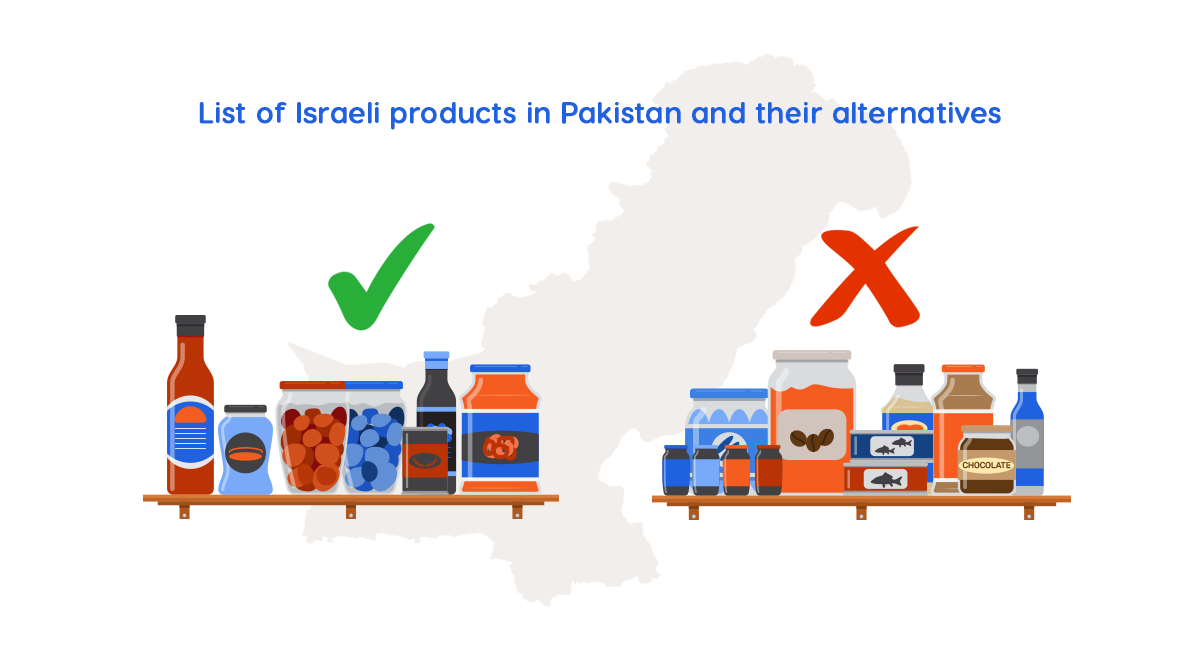Pakistan is strategically positioned between the Arabian Sea, Afghanistan, Central Asia, and China’s Xinjiang province. It is the quickest route to the sea for these places making it important for Pakistan to take advantage of its strategic location. In Pakistan, Roads are the main mode of transport, making up 96% of transporting goods and 92% of passenger travel. The country has a total of 263,755 kilometers of public roads, with 12,131 kilometers being motorways or national highways. Even though these highways make up a small portion of the roads, they handle about 80% of the total traffic.
National Highways of Pakistan are a system of toll highways that are owned, operated, and maintained by NHA under the Ministry of Communications. NHA is the custodian of 39 national highways or motorways strategic routes, has 12,131 kilometers (7,538 miles) of roads that go all over the country and connect to important places or cities where many people live. In this research article, our Tashheer research team compiled a list of 6 longest Highways connecting Pakistan.
List of Pakistan’s 6 Longest Highways Connecting the Nation
From twisting mountain roads to busy city highways, these 6 longest routes not only connect cities but also tell stories of Pakistan’s development. Join us on a journey to explore the simplicity and worth of these longest pathways in Pakistan.

N-5 National Highway
The N-5, or National Highway 5, is an 1819 km long road in Pakistan. It is the longest national highway that goes from Karachi in Sindh to Torkham in Khyber Pakhtunkhwa. The highway includes a section built on the ancient Grand Trunk Road (commonly known as G.T. Road), which fell under the new state’s control after Pakistan gained independence in 1947. The historic Grand Trunk Route stretched from Wagha, Punjab, to Peshawar, Khyber Pakhtunkhwa. It serves as an important north–south highway artery that starts from Karachi in the south through cities like Hyderabad, Moro and Sukkur in Sindh and then goes into Punjab province passing through Multan, Sahiwal, Lahore, Gujranwala, Gujrat, Lalamusa, Kharian, Jhelum, and Rawalpindi. After Rawalpindi, it turns west and passes through Attock Khurd, crosses the Indus River into Khyber Pakhtunkhwa, and continues through Nowshera and Peshawar before reaching the border town of Torkham in FATA. In total length is 1021 km in Punjab, 671 km in Sindh and 165 km in Khyber Pakhtunkhwa. The National Highway Authority takes care and manages this project. Planning a road trip along one of Pakistan’s longest highways? To make the most of your journey, consider the range and convenience of one of the 8 Electric Vehicle Options Available for Pakistani Customers.
| Length | 1,819 km (1,130 mi) |
| Route | Karachi – Hyderabad – Moro – Sukkur – Multan – Sahiwal – Lahore – Gujranwala – Gujrat – Kharian – Jhelum – Rawalpindi – Peshawar – Torkham |
| Made by | National Highway Authority |
| Completion Year | 1952 |
| Lanes | 6 |
| South End | Karachi |
| North End | Torkham |
N-35 National Highway
The Karakoram Highway, also known as KKH or N-35, is a 1,300 km (810 mi) national Pakistan Friendship Highway in Pakistan. It starts from Hasan Abdal in Punjab and goes all the way to the Khunjerab Pass in Gilgit-Baltistan, where it enters China and becomes China National Highway 314. It was built by the governments of Pakistan and China from 1959 to 1978, with over 24,000 workers involved in its construction. This highway connects Punjab, Khyber Pakhtunkhwa, and Gilgit-Baltistan in Pakistan with China’s Xinjiang Uyghur Autonomous Region. The Karakoram Highway is famous for being a top tourist spot and is one of the highest paved roads globally, crossing through the Karakoram Mountain range. It reaches a maximum elevation of 4,714 m (15,466 ft) near the Khunjerab Pass. Due to its challenging construction and high altitude, people often call it the Eighth Wonder of the World. Additionally, the highway is a part of the Asian Highway AH4.
| Total Length – Pakistan – China | 1,300 km (810 mi) 887 km 413 km |
| Route | Hasan Abdal – Haripur – Abbottabad – Mansehra – Battagram – Besham – Thakot – Gilgit – Hunza – Khunjerab Pass |
| Constructed by | Makran Coastal Highway |
| Idea by | Pakistan and Chinese Government |
| Completion Year | 1978 |
| Lanes | 2 |
| South End | Kashgar, Xinjiang, China |
| North End | Hasan Abdal, Pakistan |
N-55 National Highway
The Indus Highway also identified as National Highway 55 (N-55) is a 1264 km lengthy two to four-lane national highway in Pakistan. This highway runs along the Indus River in Pakistan connecting the port city of Karachi to the northwestern city of Peshawar through Dera Ghazi Khan. In 1980, they suggested building the Indus Highway to make a quicker route than the busy N-5. Its construction’s main aim was to help the development of western Sindh province and eastern Khyber Pakhtunkhwa Province. They started building it in 1981 from Kotri and it was finished in 1997 in Peshawar. The highway is undergoing continuous improvement and expansion projects to address traffic congestion and enhance safety due to the increasing growth rate of cities in Pakistan. This is managed by the National Highway Authority of Pakistan and is part of the country’s national highway network. The Indus Highway also goes through the Kohat Tunnel. The Government of Pakistan plans to dualize a 300 km portion from Dera Ghazi Khan to Kotri by 2023.
| Length | 1,264 km (785 mi) |
| Route | Peshawar – Darra Adam Khel – Kohat – Karak – Lakki Marwat – Dera Ismail Khan – Taunsa Sharif – Dera Ghazi Khan – Rajanpur – Rojhan Mazari – Kashmore – Kandhkot – Shikarpur – Larkana – Dadu – Jamshoro – Kotri |
| Made by | National Highway Authority (NHA) |
| Completion Year | 1980 |
| Lanes | 4 |
| South End | Kotri |
| North End | Peshawar |
N-25 National Highway
The N-25, or National Highway 25, is the 4th longest road in Pakistan, stretching 813 km from Karachi in Sindh province to the Chaman border via Quetta in Balochistan province. It used to be known as the Regional Cooperation for Development Highway (RCD Highway) and is sometimes referred to as the killer highway because of a bus crash that tragically took the lives of 27 people. The highway was built when Sardar AttaUllah Mengal served as the chief minister of Balochistan. Additionally, this is the only highway connecting Balochistan to Iran and Afghanistan as well as linking Balochistan to Sindh. However, it has been shown that traveling on this road is risky and identified as a threat as it is considered a dangerous highway in Balochistan. According to certain news sources, this dangerous highway is responsible for around 6000 deaths annually due to accidents. Several non-governmental organizations arranged a long march by foot from Quetta to Karachi. Along with longer car journeys, Pakistan’s highways also connect many towns and cities perfect for shorter explorations. For a day trip or local commute, consider the convenience and affordability offered by the Best Bike Brands in Pakistan.
| Length | 813 km |
| Highway System | Indian National Highway System |
| Route | Karachi – Hub – Uthal – Bela – Khuzdar – Kalat – Quetta – Chaman |
| Completion Year | 1991 |
| Lanes | 2 |
| South End | Karachi |
| North End | Chaman |
N-10 National Highway
The National Highway 10 or Makran Coastal Highway is a 653 km national highway in Pakistan that extends along Pakistan’s Arabian Sea coastline from Karachi in Sindh to Gwadar in Balochistan. It passes the towns of Ormara and Pasni. Makran Coastal Highway was built by Pakistan’s Frontier Works Organisation (FWO), the same group that constructed the Karakoram Highway. Construction started in 2002 and the project was finished by December 14, 2004, taking three years to complete. To make the Gwadar port successful, it was important to build the Makran Coastal Highway. Without this highway, Gwadar would be like an isolated island without connections to Karachi in the south, the rest of Pakistan, and the larger world in the north and west. Initially, its journey took two days to complete and now this highway reduced this journey to only 6 to 7 hours. Today, it is maintained and managed by Pakistan’s National Highway Authority.
| Length | 653 km (406 mi) |
| Route | Karachi – Ormara – Pasni – Gwadar |
| Completion Year | 2004 |
| Lanes | 2 |
| South End | Karachi |
| North End | Gwadar |
N-40 National Highway
National Highway 40 is one of the largest Pakistan National Highways running from Lakpass near Quetta to the border town of Taftan through Naukundi in Baluchistan extending into Iran through Road 84. According to research conducted by Tashheer Digital, N-40 National Highway is the 6th largest highway in Pakistan. It is a 2-lane highway with an overall length of 610 km. Today it is maintained and operated by Pakistan’s National Highway Authority. This highway holds strategic importance for connectivity and trade with Iran and different multinational companies. It traverses the rocky and sparsely populated desert lands of Balochistan. Although traveling the N-40 can present challenges, it offers a unique journey through remote regions and provides a dangerous link to the Iranian border.
| Length | 610 km (380 mi) |
| Route | Khuzdar – Nok Kundi – Taftan (border crossing into Iran) |
| Highway System | National highways of Pakistan |
| Completion Year | Information not available |
| Lanes | 2 |
| South End | Taftan |
| North End | Lakpass near Quetta |
Ranking the Six Major Highways Shaping Pakistan’s Infrastructure
The major six highways are given below:
| Highway | Route | Length | Lanes | Completion year |
| N-5 Highway | Karachi to Torkham | 1,819 km | 6 | 1952 |
| N-35 Highway | Hasan Abdal to Khunjerab Pass | 1,300 km | 2 | 1978 |
| N-55 Highway | Kotri to Peshawar | 1264 km | 4 | 1980 |
| N-25 Highway | Karachi to Chaman | 813 km | 2 | 1991 |
| N-10 Highway | Karachi to Gawadar | 653 km | 2 | 2004 |
| N-40 Highway | Quetta to Taftan | 610 km | 2 | 2015 |
Final Words
A country under development needs roads to transport goods from one place to another and then ports to export industrial goods to global trade partners. With continuous construction and expansion, these highway networks will continue to support Pakistan’s development and connectivity for future years. in this research article, our Tashheer research team compiled a list of 6 longest highways of Pakistan that connect northern areas to the southern cities of Pakistan. These 6 highways not only improve trade and travel in Pakistan but also create employment opportunities and promote tourism.




